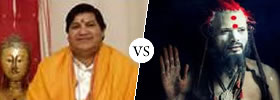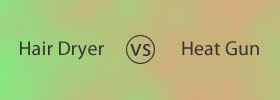Difference between Bipolar and Schizoaffective Disorder
Key Difference: Bipolar disorder is a condition in which people experience extensive mood swings. A person may start of being happy and then go quickly to becoming sad or depressed. Schizoaffective Disorder is a mental condition in which a person exhibits a recurring abnormal mood and psychotic components.
Bipolar and Schizoaffective Disorder are two different types of medical conditions that can affect a person. These are often hard to diagnose as they have similar symptoms. In many cases a person can also suffer from a bipolar disorder along with schizoaffective tendencies. It is best to often get a professional psychiatrist to diagnose a patient, as these conditions need to treated properly to ensure that a person can live that is not altered by the disorders.
 Bipolar disorder is a condition in which people experience extensive mood swings. A person may start of being happy and then go quickly to becoming sad or depressed. These mood swings are very fast and can happen in a couple of minutes. Bipolar disorder is equally common in men and women between the ages of 15-25 and there is no exact reason for the cause of this disorder, though it has been attributed to life changing situations, medications, lack of sleep and recreational drug use.
Bipolar disorder is a condition in which people experience extensive mood swings. A person may start of being happy and then go quickly to becoming sad or depressed. These mood swings are very fast and can happen in a couple of minutes. Bipolar disorder is equally common in men and women between the ages of 15-25 and there is no exact reason for the cause of this disorder, though it has been attributed to life changing situations, medications, lack of sleep and recreational drug use.
There are three types of bipolar disorder: Bipolar Disorder type I, Bipolar Disorder type II and cyclothymia. Bipolar type I is a disorder where people at least one manic episode and periods of major depression. This type of disorder was previously known as maniac depression. Type II have never suffered a full mania, however they experience high energy levels and impulsiveness, causing to be happy and really excited (known as hypomania) at one time and sad and depressed a little while later. Cyclothymia is a mild form of bipolar disorder in which a person only experiences small mood swings which are not that dangerous. People with this form alternate between hypomania and mild depression.
The symptoms for bipolar disorder may last from minutes to days to months and include easy distraction, feeling of sleeplessness, poor judgment, loss of temper, reckless behavior or lack of self control (drug use, dangerous behavior, reckless driving, etc), very elevated mood (hyperactive nature, increased energy, etc), very involved in activities, easily upset or agitated, loss of appetite, fatigue or lack of energy, difficulty concentrating, loss of pleasure in activities, low self-esteem, suicidal thoughts, etc. These symptoms take more prominence in bipolar disorder type I and are present with a lesser intensity in the type II. CBT, parental anxiety management, hypnotherapy treatments, herbal treatments, caffeine elimination and combined treatments are few treatments that have been proving effective in treating bipolar disorders.

Schizoaffective Disorder is a mental condition in which a person exhibits a recurring abnormal mood and psychotic components. The disorder is constant and does not go away. The person may constantly happy and then depressed or they may be a mix of both happy and depressed at the same time. The disorder causes the patient to loss contact with reality and commonly affects the cognition and emotion. The disorder is known to occur commonly with bipolar or borderline personality disorder. The overlapping of the disorders makes the disorder a little difficult to treat and requires the patient to undergo constant treatment and medication. Schizoaffective Disorder is known to occur more commonly in women than in men.
The exact cause of schizoaffective disorder is unknown. However, different research links the disorder to changes in genes and chemical in the brain. Other research has also been able to link abuse of substances such as marijuana and cannabis in the development and morbidity of psychotic disorders. PubMed Health lists the symptoms as:
- Changes in appetite and energy
- Disorganized speech that is not logical
- False beliefs (delusions), such as thinking someone is trying to harm you (paranoia) or thinking that special messages are hidden in common places (delusions of reference)
- Lack of concern with hygiene or grooming
- Mood that is either too good, or depressed or irritable
- Problems sleeping
- Problems with concentration
- Sadness or hopelessness
- Seeing or hearing things that aren't there (hallucinations)
- Social isolation
- Speaking so quickly that others cannot interrupt you
However, in order to be diagnosed with the condition, DSM criteria states that “there must be a period of at least two weeks of psychosis without mood disorder, and these symptoms cannot be due to medication(s), substance use or another medical condition.” The schizoaffective disorder must be treated as without treatment it could worsen and can even cause a person to commit suicide. Treatment for the condition includes a combination of medicine, psychotherapy and psychosocial rehabilitation focused on symptom management and recovery.
|
|
Bipolar |
Schizoaffective Disorder |
|
Definition |
Bipolar is a psychotic disorder during which the patient exhibits excessive mood swings such as mania and depression. |
Schizoaffective Disorder is a medical condition in which a person experiences recurring abnormal mood and psychotic components. |
|
Symptoms |
Symptoms differ depending on the person. However, constant and excessive mood swings are associated with bipolar. |
Changes in appetite and energy, disorganized speech that is not logical, false beliefs (delusions), such as thinking someone is trying to harm you (paranoia) or thinking that special messages are hidden in common places, lack of concern with hygiene or grooming, mood that is either too good, or depressed or irritable, problems sleeping, problems with concentration, sadness or hopelessness, seeing or hearing things that aren't there (hallucinations), social isolation, speaking so quickly that others cannot interrupt you. |
|
Causes |
Bipolar disorder has been attributed to genetics, physiological and environmental factors. |
Most of the causes of this condition are unknown. However, abuse of marijuana and cannabis are being closely linked in the development and morbidity of psychotic disorders. |
|
Types |
Bipolar I disorder, Bipolar II disorder, Cyclothymia and Bipolar disorder NOS. |
Bipolar type, Depressive type |
|
Treatment |
CBT, parental anxiety management, hypnotherapy treatments, herbal treatments, caffeine elimination and combined treatments. |
Conventional treatment for schizoaffective disorder consists of a combination of medicine, psychotherapy and psychosocial rehabilitation focused on symptom management and recovery. Medications include antipsychotic antidepressant, mood stabilizer and benzodiazepines. |
Image Courtesy: health.com, trialx.com









Add new comment